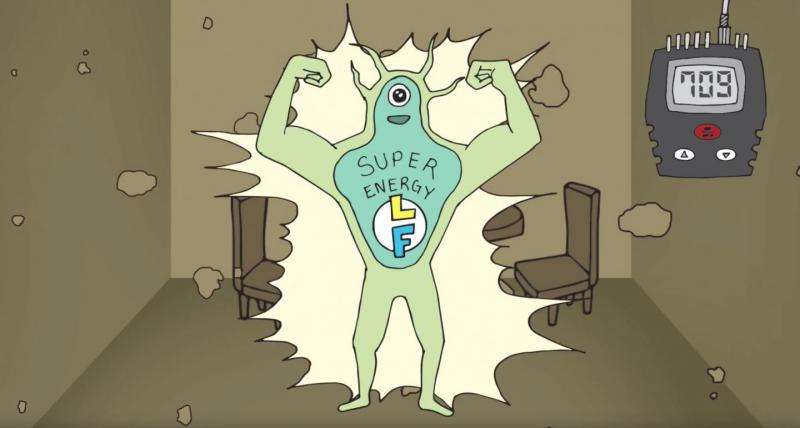Researchers discover a royal flush in powering fuel cells with wastewater

As renewable energy sources goes, solar rays have historically hogged the limelight.
But two Virginia Tech researchers have stolen the spotlight from the sun by discovering a way to maximize the amount of electricity that can be generated from the wastewater we flush down the toilet.
An article recently published in Scientific Reports detailing their findings speaks to a growing sustainability movement to capture energy from existing waste to potentially make treatment facilities more energy-efficient.
Xueyang Feng and Jason He traced bacteria, which led them to discover that the working relationship between two specific substrates produced more energy than either did separately. This work will help take the mystery out of how electrochemically-active bacteria create energy. It could help in the development of new treatment system called a microbial fuel cell.
"Tracing the bacteria gave us a major piece of the puzzle to start generating electricity in a sustainable way," said Feng, an assistant professor of biological systems engineering. "This is a step toward the growing trend to make wastewater treatment centers self-sustaining in the energy they use."
Feng is in the College of Agriculture and Life Sciences and the College of Engineering; He, an associate professor of environmental engineering, is in the College of Engineering.
The discovery is important because not all organics perform the same job in the same way. Some work because they are food for the electricity-generating bacteria while others are good at conducting energy.
While one substrate known as lactate was mainly metabolized by its host bacteria to support cell growth, another substrate known as formate was oxidized to release electrons for higher electricity generation.
The team found that when these two substrates are combined, the output of energy is far greater than when they are working separately. The organics work in tandem with receptors in fuel cells, and while research using microbial fuel cells is not new, the kind of organics that Feng and He used was novel in generating electricity because they were able to measure the symbiotic nature of two particular organics.
The unique methodology that allowed them to trace the metabolic pathways of the different strains of bacteria, called carbon 13 pathway analysis, was the first time this type of isotope labeling process was used in measuring metabolism in microbes, the researchers said. The analysis works by creating a non-radioactive isotope on a carbon group that is visible through a mass spectrometry.
Harnessing energy from wastewater is a sustainability measure that even urban plants such as the wastewater treatment facilities in Washington, D.C. have already adopted. Harnessing energy using bacteria in microbial fuel cells is not the only way researchers are looking at generating energy from waste.
Treatment plants are now able to harness methane from the solids in sewage allowing towns such as Grand Junction, Colorado, to generate energy. The plant takes in 8 million gallons of wastewater and is the first city in the U.S. to fuel its vehicle fleet with produced from human waste.
He's research also includes work with gaseous elements, specifically ammonia. In wastewater, ammonia is a pollutant. If too much is discharged into a watershed, it feeds harmful algal blooms that can devastate aquatic ecosystems.
Mohan Qin, a second-year doctoral student in He's lab, has built a system that recovers ammonia and removes other contaminants while generating electricity at the same time. This is the first time that ammonia-driven forward osmosis has been combined with an ammonia-generating microbial electrochemical cell, Qin said.
The idea earned Qin, who is from Shandong Province, China, the 2015 Innovation Award for Best Technological Advancement from the International Society for Microbial Electrochemistry and Technology.
The results of this work encouraged the further development of microbial fuel cells, especially system scaling up. The He lab is currently operating a 200-L microbial fuel cell system in a local wastewater treatment plant for evaluating its long term performance with actual wastes.
For now, however, Feng and He are not only giving wastewater it's moment in the sun, they are making sure that, whether it's ammonia or organic waste, that producing energy from wastewater is part of a movement.
More information: Shuai Luo et al. 13C Pathway Analysis for the Role of Formate in Electricity Generation by Shewanella Oneidensis MR-1 Using Lactate in Microbial Fuel Cells, Scientific Reports (2016). DOI: 10.1038/srep20941
Journal information: Scientific Reports
Provided by Virginia Tech

















